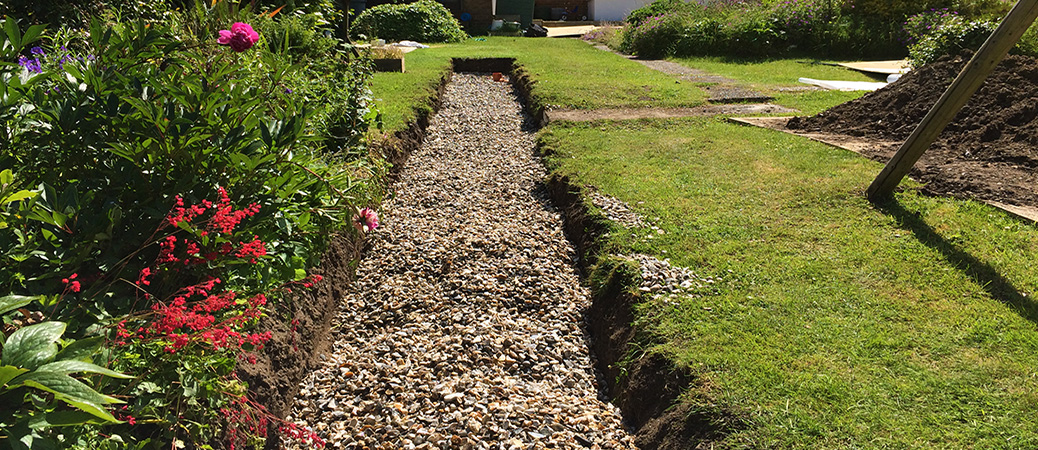Soakaway and Drainage Fields
Owners of septic tanks and sewage treatment plants who have access to a suitable area of land can consider discharging the overflow effluent into a properly designed and sized soakaway / drainage field.
There are various factors which determine whether a soakaway / drainage field is permitted and whether this disposal method would operate effectively. The location of the proposed soakaway / drainage field is crucial as certain areas are designated by the Environment Agency as ‘Groundwater Source Protection Zones’. Within these areas the groundwater is extracted and used for drinking water, prohibiting the use of a soakaways / drainage fields in some areas for the disposal of waste water effluent.
The porosity of the sub-strata will also determine if a soakaway / drainage field will work, and if so, the area of soakaway required. To determine the porosity of the sub-strata it is necessary to conduct a Percolation Test which measures the time it takes for water to drop. The results of the percolation test must fall within certain parameters otherwise the soakaway / drainage field would not be permitted. It is also crucial that the area of land where the soakaway / drainage field is to be constructed does not flood or become water logged.
The size of a soakaway / drainage field would be calculated from the results of the percolation test, number of bedrooms within the property and the type of effluent being discharged i.e. septic tank or treated effluent. A soakaway / drainage field receiving the treated effluent from a sewage treatment plant requires 20% less plant area than that of a septic tank.
It is crucial to the operation and lifespan of a soakaway / drainage field that the correct materials are used during construction. Non-flexible perforated underground drainage pipework with slots or holes should be used with a clean stone surround. Coiled land drainage pipework should not be used.
Soakaways / Drainage fields are required to be a minimum of:
- 10M from a ditch or watercourse;
- 50M from a water abstraction point;
- 15M from any building and other soakaway network;
- 2M from any boundaries.
Contact Us
For further assistance and advice, contact us on 01255 853890 | enquiries@mantair.com – or by filling out the form on our contact us page.
